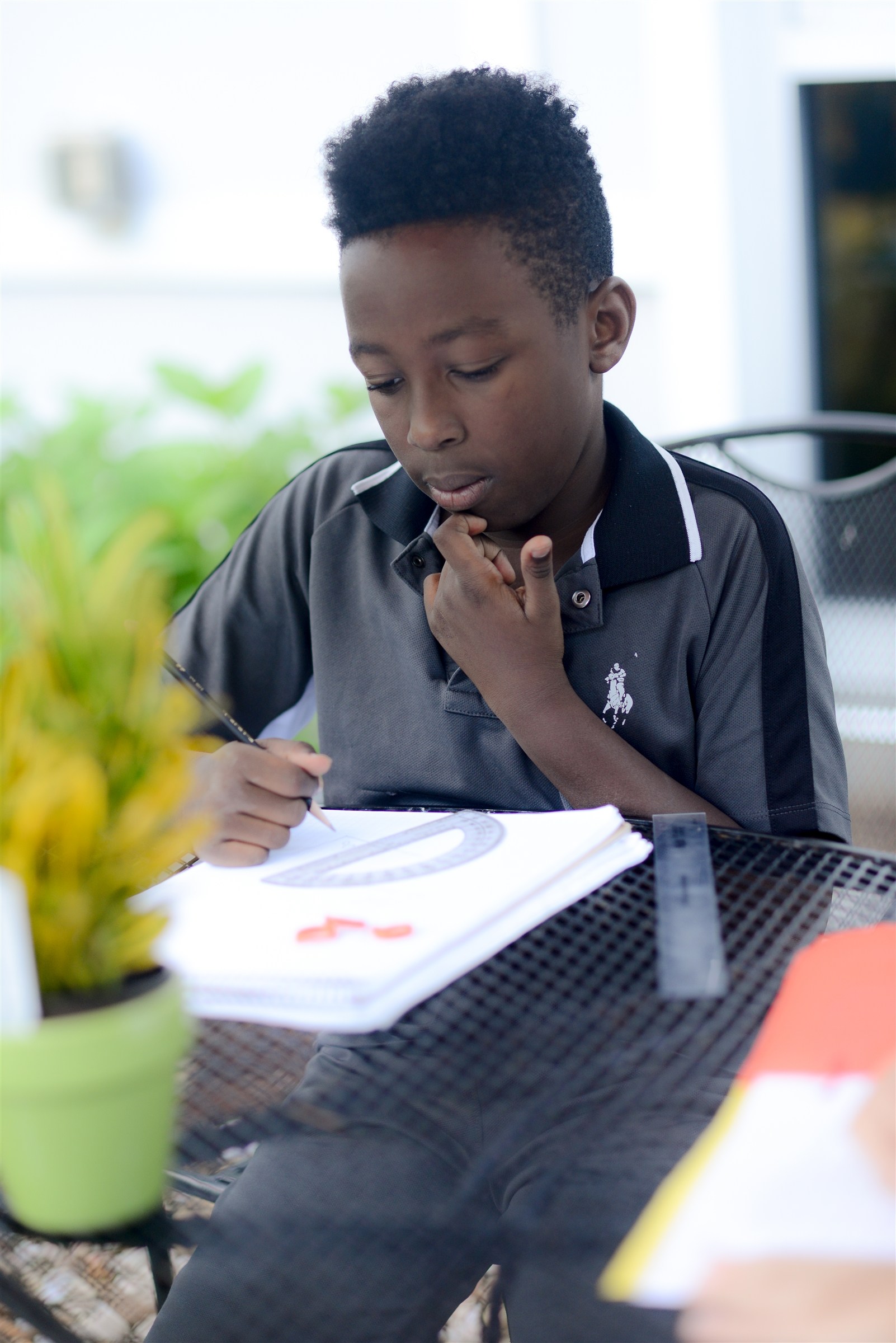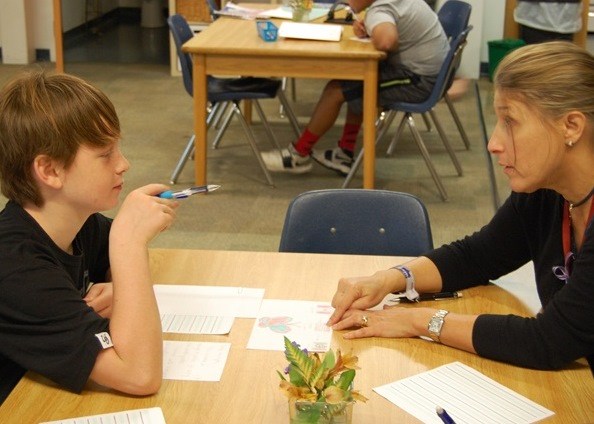The Story of Our Alphabet, the fourth of the five Great Lessons, tells the history of written communication. Grammar is taught through word study, parts of speech, logical analysis and syntax study. Language expression includes studies in spelling, capitalization, punctuation, interpretive reading, poetry, and style. Lessons in written expression include study of phrases, clauses, sentences, sentence analysis and writing paragraphs. Language study also includes practice in the use of dictionaries, encyclopedias, the thesaurus, and other reference materials. Students learn to outline, use story maps, and prepare rough drafts and final copies of their written work. These studies serve the students in both creative writing and practical writing. Literature studies include small group discussion, book reports and essay writing.
 Dr. Montessori’s vision for Elementary education begins with a series of story lessons about the origin of the earth, the beginning of life, and the coming of human beings and their accomplishments, including the development of language and number systems. Also known as Cosmic Education, this approach recognizes that every form of life, from coral in the sea to insects in the air to human beings on land, has its purpose and task in the universe. Each area of study is related to the whole body of human knowledge, and subject matter is presented with harmony and cohesion. This universal approach provides students with a wealth of knowledge to explore and also begs the question, ‘What is your purpose and task in the world?’
Dr. Montessori’s vision for Elementary education begins with a series of story lessons about the origin of the earth, the beginning of life, and the coming of human beings and their accomplishments, including the development of language and number systems. Also known as Cosmic Education, this approach recognizes that every form of life, from coral in the sea to insects in the air to human beings on land, has its purpose and task in the universe. Each area of study is related to the whole body of human knowledge, and subject matter is presented with harmony and cohesion. This universal approach provides students with a wealth of knowledge to explore and also begs the question, ‘What is your purpose and task in the world?’
 Spanish is taught as part of Springmont's Primary, Elementary, and Middle School curricula. Elementary children are ready for formalized study and build upon the vocabulary and oral language experienced at the Primary level, as they learn to also read and write in Spanish.
Spanish is taught as part of Springmont's Primary, Elementary, and Middle School curricula. Elementary children are ready for formalized study and build upon the vocabulary and oral language experienced at the Primary level, as they learn to also read and write in Spanish.